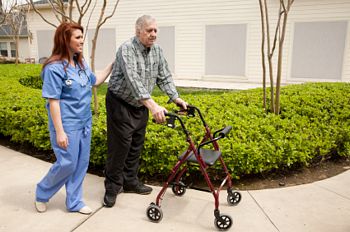POPULATION ESTIMATES AND SOCIODEMOGRAPHIC COMPARISONS
Just over 6.8 million Americans living outside of institutions use assistive devices to help them with mobility. This group, which amounts to 2.6 percent of the non-institutional population, comprises 1.7 million wheelchair or scooter riders (0.6 percent of the population) and 6.1 million (2.4 percent of the population) users of other mobility devices, such as canes, crutches, and walkers (see Table 1). Canes are by far the most widely used mobility devices: 4.8 million Americans use them, or 70 percent of mobility device users.1 Walker use is reported by 1.8 million persons and crutches are used by 566,000 persons.2
Of the 1.7 million wheelchair/scooter users, the vast majority (90 percent, or 1.5 million persons) use manual wheelchairs. Only 155,000 community- resident Americans use electrically powered wheelchairs, and only 142,000 use scooters. Some 291,000 persons use either (or both) of these motorized devices.
Tables 1 through 4 present prevalence estimates of mobility device use broken down by the demographic and socioeconomic characteristics of device users. In Table 1, basic sociodemographic and economic breakdowns are provided for all devices, with separate prevalences for manual wheelchairs, electric wheelchairs, and scooters, and for all three devices combined. Separate prevalence estimates are also provided for cane, crutch, and walker use, as well as for those three devices combined. Tables 2 through 4 provide more extensive sociodemographic and economic data, but device use is broken down less finely: wheelchairs (manual, electric, or both), scooters, canes, crutches, walkers, and any of the above.






Leave a Reply